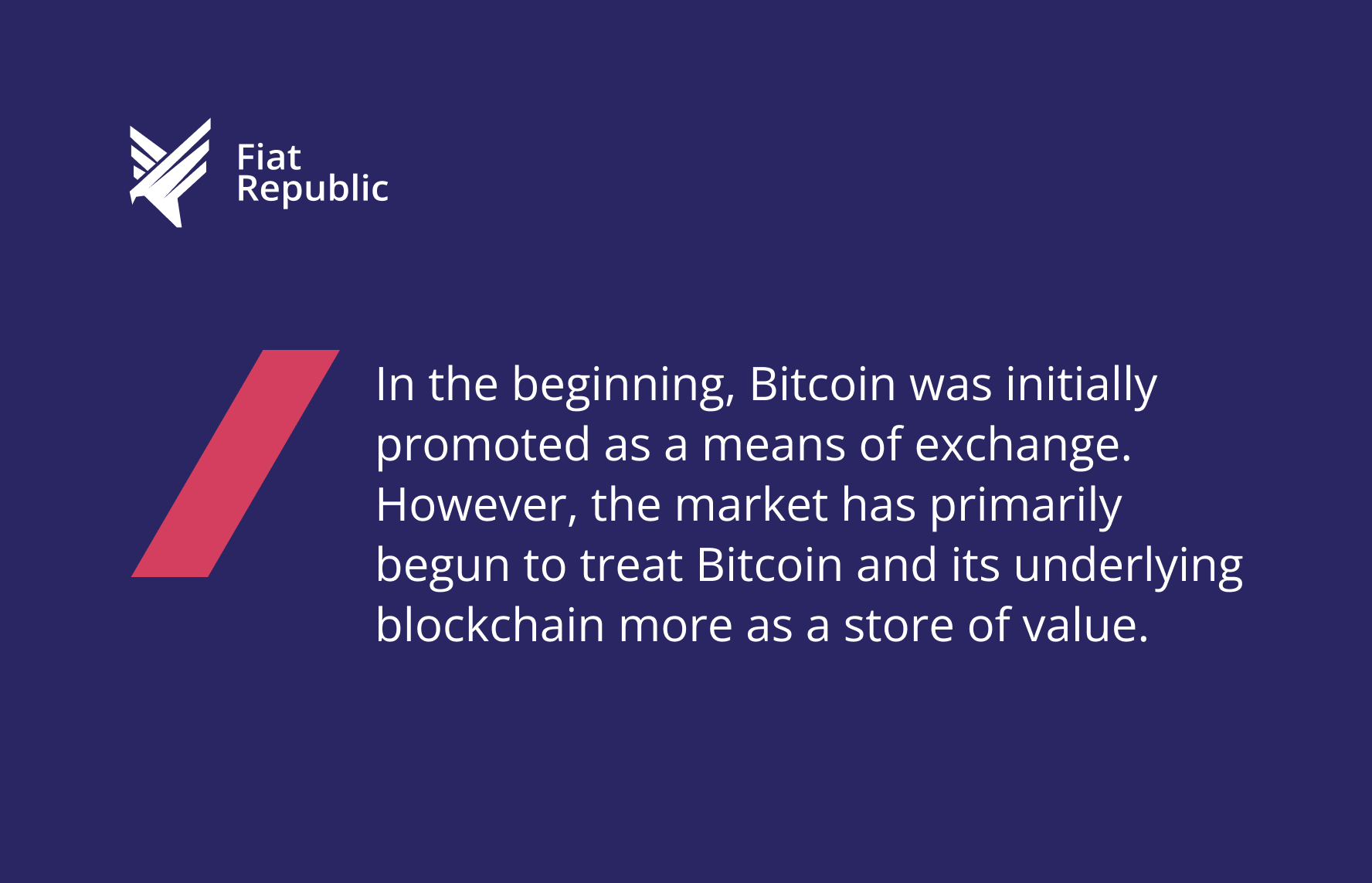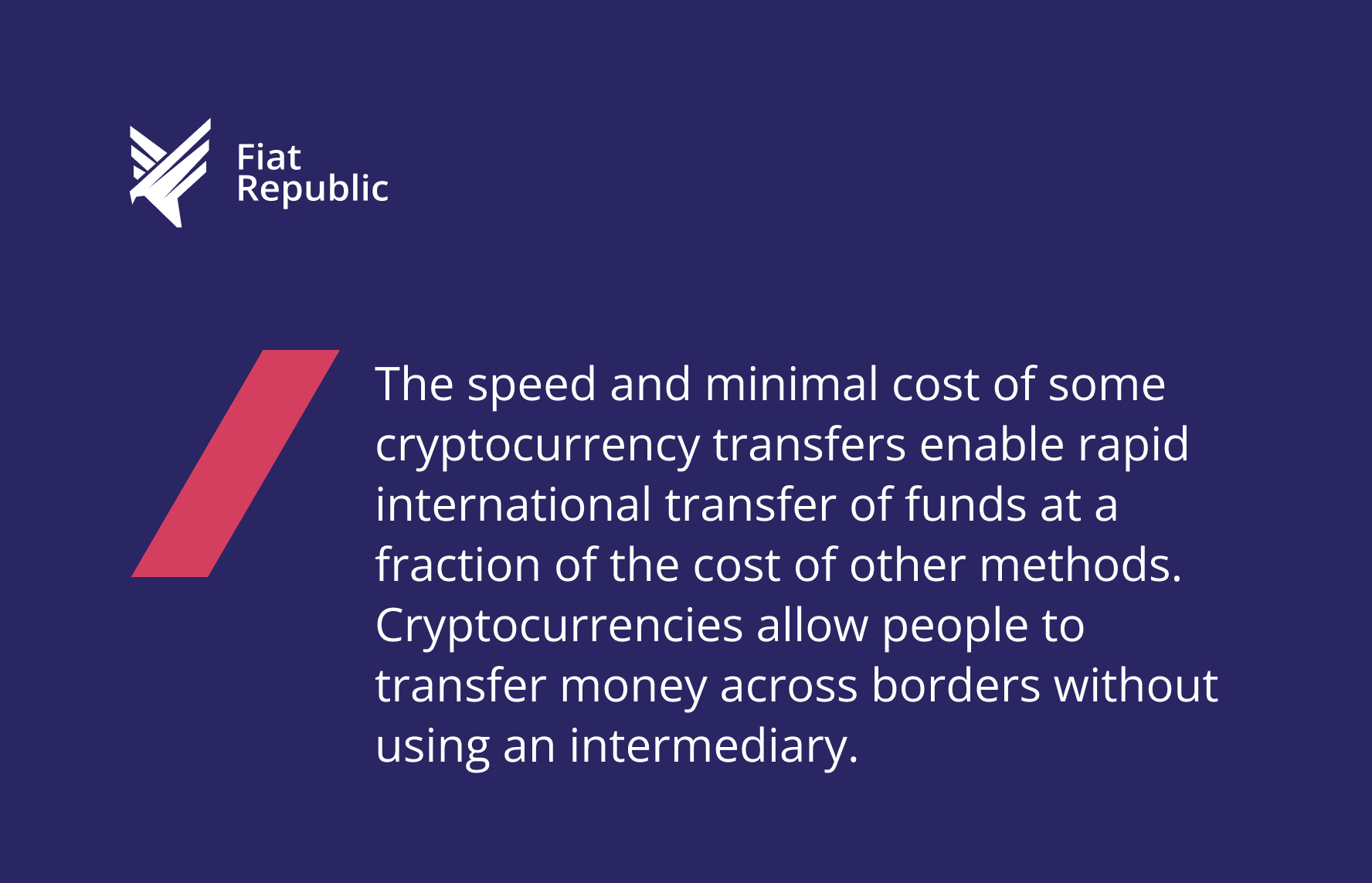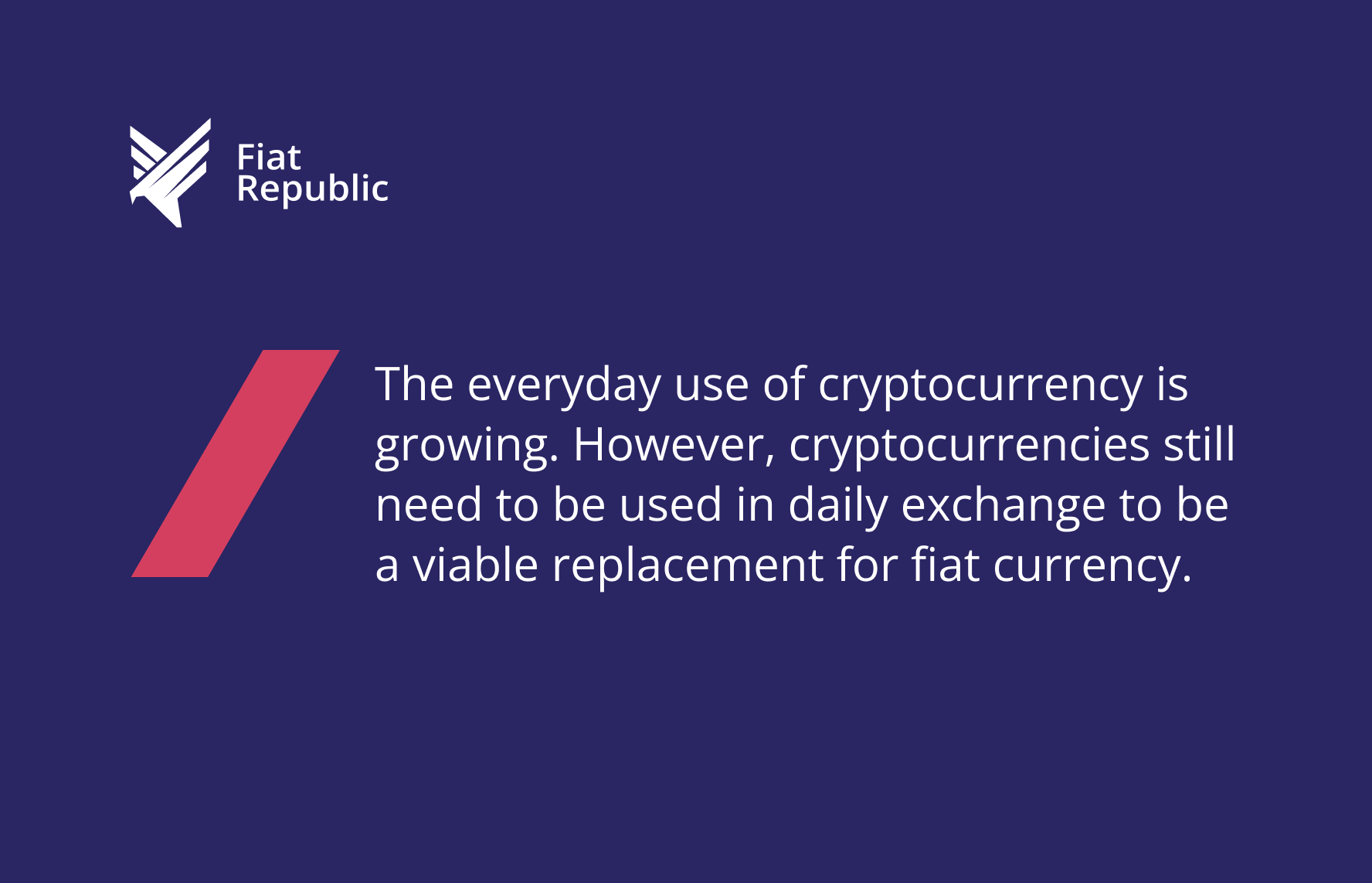What is bitcoin used for? Exploring the use cases of cryptocurrency and blockchain technology

In under 20 years, starting with the publication of the Satoshi white paper following the 2008 banking crises, cryptocurrencies, and blockchain technology have grown from ideas on internet forums to innovations set to change the face of different segments of our economy and society. This article focuses on the versatility of these technologies, their current applications, and the possibilities of their use in sectors beyond finance, highlighting various blockchain applications.
Briefly, cryptocurrencies are digital or virtual currencies that employ cryptography to secure their transactions and are implemented on decentralized systems using the blockchain. Blockchain is a type of distributed ledger technology that maintains a record of all the transactions in a network of computers. Theoretically, it is highly secure and cannot be altered once recorded. However, the particulars of each blockchain’s recording system and securing transactions are up to its consensus mechanisms. The most common consensus mechanisms are Bitcoins Proof of Work and Ethereum’s Proof of Stake.
Major uses of blockchain

The most immediate uses of blockchain are all financial:
– as a means of exchange,
– a store of value,
– investment
Blockchain technology can also improve and streamline various business processes. Take, for example, the healthcare and pharmaceutical industries. It can automate settlements and product verification, secure patient data in clinical trials, and streamline information flow for medical records and insurance verification.
Secondly, which category any particular cryptocurrency falls into has a lot to do with a) the features its particular blockchain provides and b) what features the market and institutions choose to value.
For example, Bitcoin, with its fully auditable and secure blockchain and fixed monetary supply, was initially promoted as ‘digital cash,’ i.e., a means of exchange. However, while the slow relative speed and high relative cost of transacting are a function of its security, it is challenging to act as an accessible medium of exchange. Instead, the market has primarily begun to treat Bitcoin and its underlying blockchain more as a store of value. In its place as a medium of exchange are alternatives that don’t use proof of work mechanisms, such as Ripple or Solana.
Similarly, governments worldwide have been researching the creation of their blockchains for Central Bank Digital Currencies.
Cryptocurrencies in financial transactions

Bitcoin is the first and one of the most popular cryptocurrencies. Although it is not as fast as Ripple or Solana, it is convenient regarding traceability, immutability, and security. These features make it attractive for large organizations, banks, and even the government that desire to open their ledgers to the public while remaining secure. The fact that Bitcoin transactions are recorded on the blockchain makes it almost impossible for anyone to embezzle funds.
Another significant value proposition of specific cryptocurrencies is remittances.
Take, for instance, Ripple. Its speed and minimal cost enable rapid international fund transfers at a fraction of the cost of other methods. Additionally, cryptocurrencies allow people to transfer money across borders without using an intermediary. However, currently, cryptocurrencies are still not considered wholly mediums of exchange. For this reason, crypto remittances still need to go through an exchange to be converted into local currency.
Another use case of cryptocurrencies is smart contracts, a feature pioneered by the ethereum blockchain. Smart contracts are digital contracts that are self-executing. The contracts execute by themselves when the specified conditions are met. This has the benefit of removing middlemen from transactions, cutting costs, enhancing efficiency, and, in the long term, creating a system more robust against interference from third parties. Smart contracts have many applications, especially in decentralized finance (DeFi) platforms that enable lending, borrowing, and trading of cryptocurrencies, all without the involvement of banks!
Asset management and investment by financial institutions
While the overall crypto ecosystem and economy are nascent, what is undoubtedly true is that the mainstream is finally accepting cryptocurrencies and digital assets as a new asset class. While retail investment speculation and cryptocurrency are not new, cryptocurrency is finally receiving recognition and support from institutional investors and organizations.
For example, in January of this year, the USA’s Securities and Exchange Commission (SEC) approved 13 spot bitcoin exchange-traded funds (ETFs). Currently, some analysts are predicting approval of Ether ETFs within the month. Since many retail or ‘old school’ investors often found it difficult to invest in crypto, and many distrusted it based on novelty, ETFs provide exposure to cryptocurrencies while reducing the distrust and risk associated with direct crypto investment.
Stablecoins and financial stability

Stablecoins have become essential in cryptocurrency as both a stabilizing force and an off-ramp from markets during moments of volatility. Stablecoins aim to do this by keeping the price at a fiat peg, most commonly the US dollar. There are several types of stablecoins, each employing different mechanisms to maintain price stability:
-
Fiat-backed stablecoins: These are the most common and the most trusted. These are backed 1:1 with reserves of the equivalent fiat money and treasury bills. The two most popular stablecoins are Tether (USDT) and USD Coin (USDC).
-
Crypto-backed stablecoins: These are issued by over-collateralizing other cryptocurrencies, such as with DAI, via the MakerDAO protocol.
-
Algorithmic stablecoins: These algorithms regulate supply and demand to ensure a fixed price. However, they have historically been the most unstable and risky, as witnessed during the TerraUSD (UST) collapse of May 2022.
It’s important to note that stablecoins aim for price stability but don’t guarantee a perfect 1:1 value with their pegged asset. Market forces can still cause slight fluctuations, and in the worst-case scenario, such as UST, stablecoins can completely decouple from their reference asset.
Related posts:
Fiat currency vs cryptocurrency: understanding the future of money and Web 2.5
Mastering embedded finance: a complete guide for fintech innovators
Understanding on-ramp vs off-ramp: the key to cryptocurrency accessibility
Benefits for traders and high-inflation countries

By maintaining a close to 1:1 peg with fiat currencies, stablecoins provide cryptocurrency traders the means of quickly entering existing crypto positions. DeFi traders can exit their positions speedily but remain on the blockchain with a less volatile asset with a 1:1 value. In the case of exchange trading, the trader can reduce exposure to crypto price fluctuations when exiting investments.
Outside of crypto trading, stablecoins anchored to more stable currencies, such as the US dollar, act as reliable hedges for countries whose local currency is rife with inflation, such as Venezuela.
Cryptocurrencies in everyday life

It is certainly true that everyday use of cryptocurrency is growing, such as with remittances or as a hedge against a local currency. However, cryptocurrencies still need to be used in daily exchange to be a viable replacement for fiat currency. Nevertheless, more and more companies and online services, including financial institutions, allow using cryptocurrencies as a means of payment. Some big names in the business world, such as Microsoft, AT&T, and Overstock, currently accept Bitcoin as a means of payment.
Further, PayPal’s entry into offering cryptocurrency and the launch of its stablecoin PYUSD mark the beginning of a new era for cryptocurrencies and mainstream payments.
Innovative applications of cryptocurrencies and smart contracts beyond finance
Although blockchain technology and cryptocurrencies are largely associated with finance, many unique applications and industries remain to be explored.
Internet of Things (IoT) and cryptocurrencies
IoT connects physical devices with electronics, software, and connectivity, allowing them to gather and share information.
One of the most promising applications of cryptocurrencies is enabling secure, automated micropayment IoT networks. For example, a smart car could park and then recharge itself by paying for the parking and charging fees using cryptocurrencies. See, for example, IOTA, a blockchain that allows for IoT micropayments without fees.
Blockchain technology can also improve the reliability and security of IoT network data. With the help of blockchain technology, the devices’ data is saved in a way that cannot be altered, eliminating the issue of data falsification in the IoT network.
Supply chain transparency
Traditional supply chain management is incredibly complex and requires extensive tracking and documentation. Blockchain technology can help provide solutions to this complexity. It allows for creating an open and secure record for the entire supply chain of a product.
Every activity, from acquiring raw materials to production and distribution, can be documented on the blockchain. This establishes an irreversible record of the product, thus improving the audibility and responsibility. Additionally, blockchain fosters a collaborative business network, enhancing data transparency, trust-building, and automated processes within the industry.
Several companies and industries are already testing or implementing blockchain for supply chain optimization.
-
Food industry: Walmart has joined with IBM to utilize the blockchain for food chain management: this makes it easy for the two companies to track the origin of specific foods in the event they are contaminated
-
Diamond industry: De Beers is currently using blockchain technology to track diamonds from when they are mined up to the consumer market to ensure (and prove) they are from an ethical source.
-
Automotive industry: BMW has tested blockchain in sourcing and managing the materials used in manufacturing its automobiles to ensure that they are sourced correctly and to enhance the efficiency of the supply chain.
Challenges and prospects in blockchain adoption
As highlighted in this article, one of the main challenges for cryptocurrency and blockchain is becoming something individuals use and interact with daily. While ETFs have helped mainstream cryptocurrencies as an investment asset in the short term, getting users to use cryptocurrencies for payments will be key to bringing us to the next chapter of the cryptocurrency story. Part and parcel of this goal are cryptocurrencies and blockchain’s associated regulatory and security challenges. The blockchain network offers a secure and scalable solution that can address these challenges by enabling trust, data ownership, and accountability, which are crucial for widespread adoption.
Regulatory and security challenges.
Because cryptocurrencies are decentralized and borderless, as well as novel to the regulatory profile of the financial landscape, they often conflict with the conventional legal systems developed for centralized financial systems.
A few countries and organizations have made strides in developing regulation. For example, the EU’s Markets in Crypto-Assets (MiCA) regulation enables the EU member states to approach the regulation of cryptocurrencies uniformly.
Secondly, while decentralization certainly has benefits, it also has downsides, specifically facilitating illicit activities. While many blockchains provide higher traceability than, for example, fiat cash, other blockchains and protocols help make these transactions anonymous, facilitating money laundering and other criminal activities.
A final important issue is the network’s security and the data being transferred. Blockchain is safe to varying degrees, depending on the network. However, the surrounding environment, such as exchanges, wallets, and smart contracts, is all a surface area for exploits and scams. Millions and millions have been stolen from users via both exchanges and DeFi networks. Ensuring data integrity is crucial in this context.
Conclusion
Cryptocurrencies and blockchain technology have advanced greatly since the inception of the first cryptocurrency, Bitcoin, in 2009. These technologies are set to revolutionize many aspects of the economy and society, from finance to supply chain management.
While we’ve mentioned a few examples here, the possibilities are endless. Notable mentions are eliminating voter fraud through blockchain or immutable forms of ID. In finance, the further development of DeFi might result in better and more accessible financial systems.
However, constant development and integration are needed to realize these potentials and minimize the related risks. This includes (but is not limited to) enhancing technology to improve the system’s scalability and energy, improving interfaces to make them more accessible, and formulating solid regulatory structures that support innovations while protecting users.
That is to say, cryptocurrencies and blockchain technology have not reached their development yet. These technologies are still evolving and expanding their areas of application. Thus, the focus should be placed on emphasizing their benefits while mitigating their drawbacks to enhance efficiency, openness, and inclusiveness in the future.
FAQ
What are cryptocurrencies used for?
Cryptocurrencies are mainly employed as digital currencies for the purpose of investing and speculative trading. They are also used in P2P transactions, for money transfers, and sometimes as a form of savings or store of value.
Which crypto has the most use cases?
Ethereum has the biggest variety of applications at the moment because of its smart contracts. It is commonly applied in decentralized finance, non-fungible tokens, and other decentralized applications like dApps.
What real-world problems does crypto solve?
Cryptocurrencies are designed to offer financial solutions to people who do not have bank accounts and facilitate faster and cheaper international payments. They also have the advantage of acting as a hedge against inflation and devaluation of currencies in some economies. However, the solution varies from cryptocurrency to cryptocurrency.
How will crypto impact society?
Crypto may result in the decentralization of the financial systems and a rise in financial liberalization. It could also transform how people perceive money, how value is transferred (such is the case with “Real World Assets”), and who owns what in the digital world.
Will crypto be around in 10 years?
It is more likely than not that cryptocurrency will exist in some form in the future. However, the landscape might look incredibly different, from the type of cryptocurrencies available to the regulatory and institutional landscape surrounding it.



